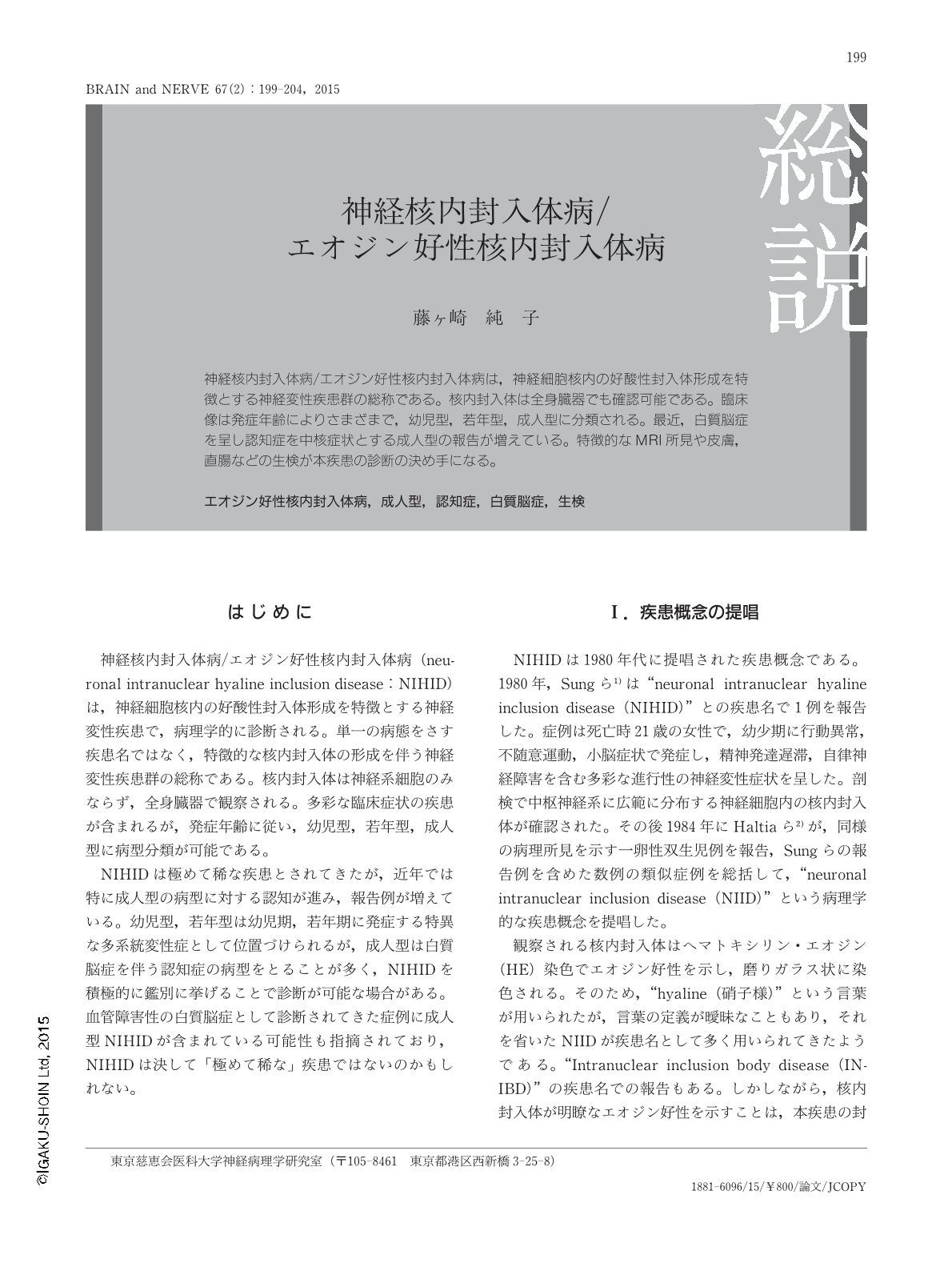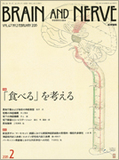Japanese
English
- 有料閲覧
- Abstract 文献概要
- 1ページ目 Look Inside
- 参考文献 Reference
- サイト内被引用 Cited by
神経核内封入体病/エオジン好性核内封入体病は,神経細胞核内の好酸性封入体形成を特徴とする神経変性疾患群の総称である。核内封入体は全身臓器でも確認可能である。臨床像は発症年齢によりさまざまで,幼児型,若年型,成人型に分類される。最近,白質脳症を呈し認知症を中核症状とする成人型の報告が増えている。特徴的なMRI所見や皮膚,直腸などの生検が本疾患の診断の決め手になる。
Abstract
Neuronal intranuclear hyaline inclusion disease (NIHID) is a neurodegenerative disorder characterized by eosinophilic intranuclear inclusions in neuronal cells. Such inclusions are also found in non-neuronal cells. The clinical features and pathological findings in patients with NIHID are highly varied, and NIHID is therefore considered a heterogeneous disease entity. It can be categorized into three clinical subgroups based on disease onset and duration: the infantile, juvenile, and adult forms. The infantile and juvenile forms are generally associated with slowly progressive multiple-system degeneration. Recently, reports of patients with adult form NIHID have increased. Major symptoms in typical adult-onset cases are memory loss, cognitive dysfunction, and disorientation. Autonomic dysfunctions and peripheral neuropathy are also frequently observed. This type of adult-onset NIHID can be predicted by characteristic MRI findings—leukoencephalopathy with high intensity of the corticomedullary junction in diffusion-weighted imaging. Ante-mortem diagnosis of NIHID can be made by identification of intranuclear inclusions in skin or rectal biopsies. Intranuclear accumulation of abnormal proteins and/or dysfunction of protein degradation might underlie the pathogenesis of NIHID; however, the disease mechanisms remain largely unknown.

Copyright © 2015, Igaku-Shoin Ltd. All rights reserved.


